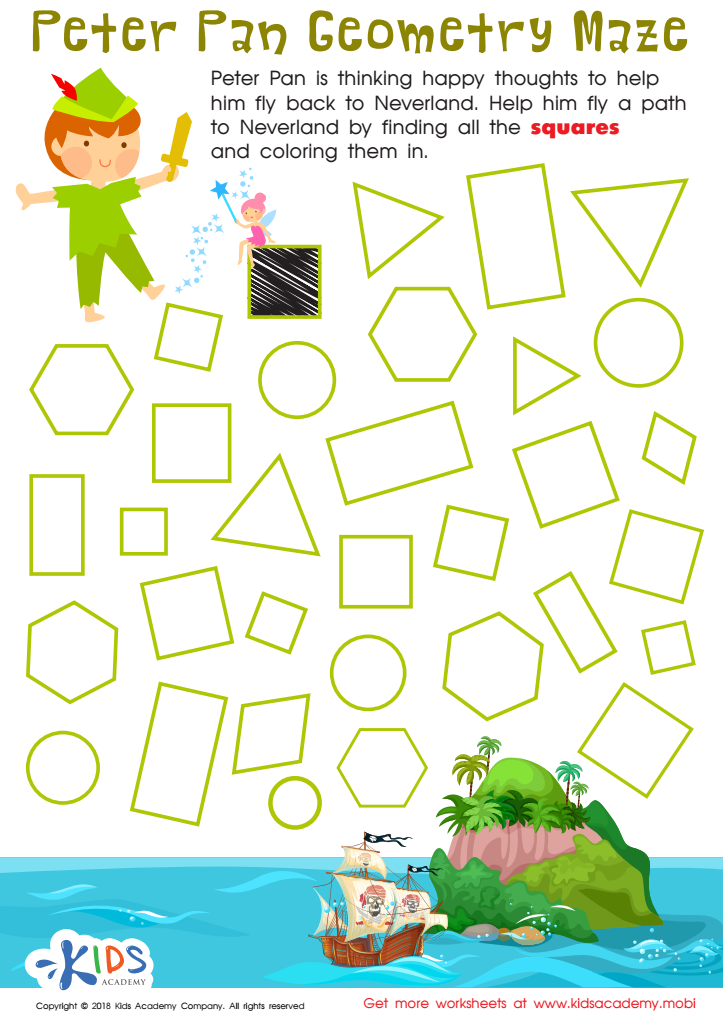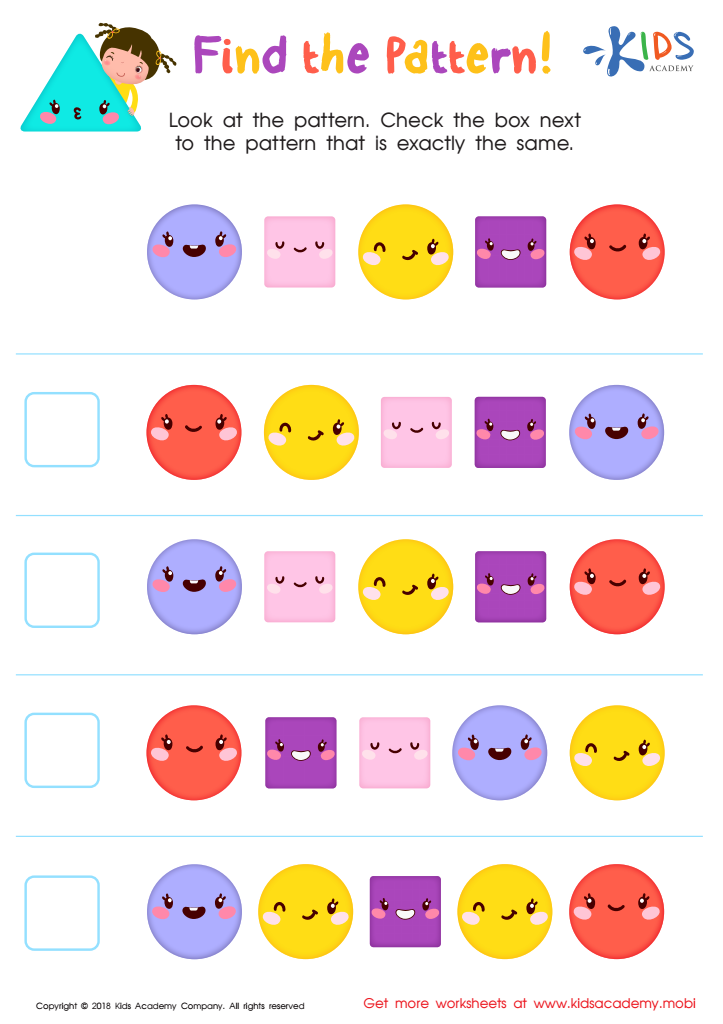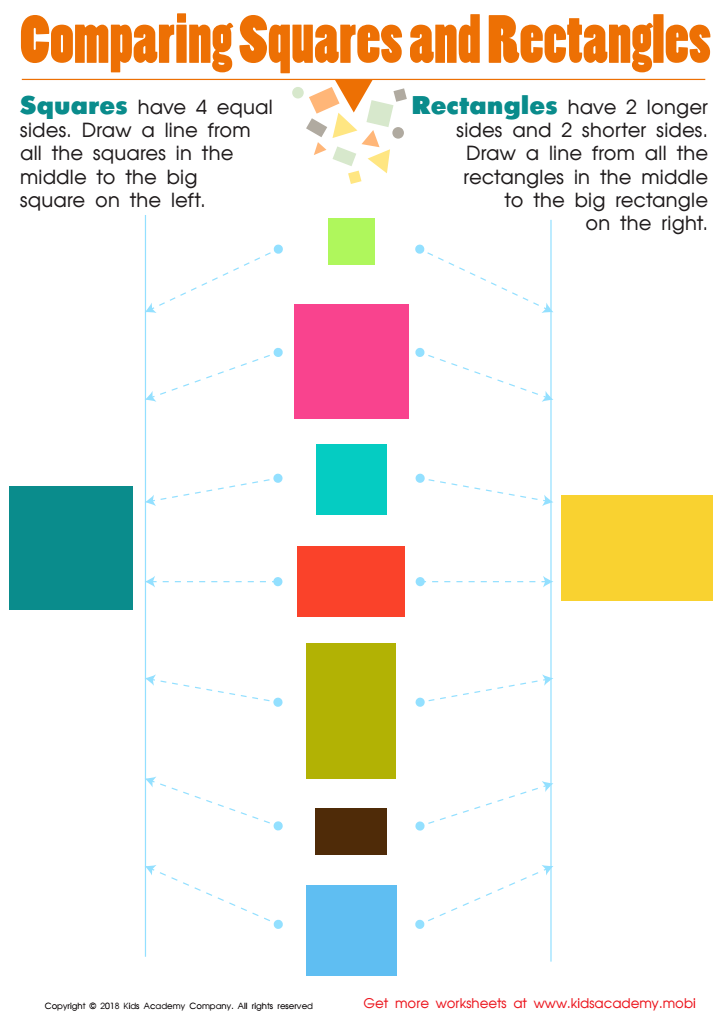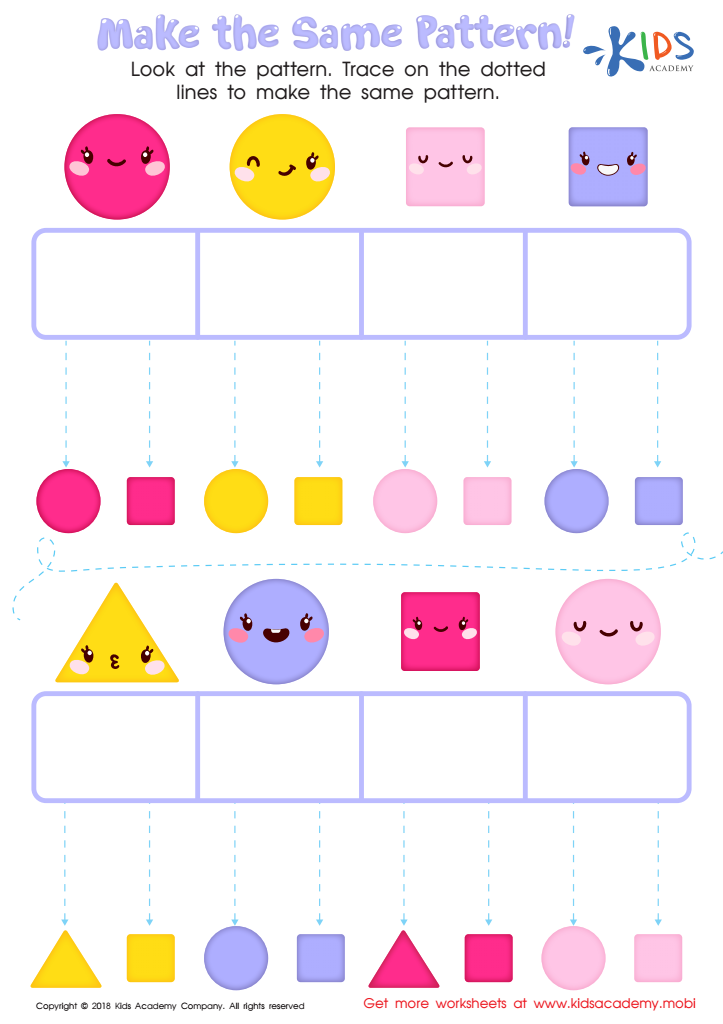Critical Thinking Normal Geometry Worksheets for 4-Year-Olds
5 filtered results
-
From - To
Introduce your 4-year-olds to the exciting world of geometry with our Critical Thinking Normal Geometry Worksheets! Designed specifically for early learners, these engaging worksheets foster critical thinking skills while exploring shapes, patterns, and spatial relationships. Each activity promotes problem-solving and encourages children to think independently as they identify, match, and sort various geometric figures. Perfect for at-home learning or classroom use, these heartwarming worksheets not only support foundational math skills but also inspire curiosity and creativity in young minds. Equip your child with the tools they need for academic success and watch them develop a deeper understanding of geometry!


Peter Pan Worksheet


Find the Pattern Worksheet


Comparing Squares Rectangles Worksheet


Make the Same Pattern Worksheet


Using Squares to Make Rectangles Worksheet
Critical thinking skills are essential for young learners, and introducing concepts like Normal Geometry at the age of four can set the foundation for stronger cognitive abilities. Engaging children with spatial reasoning and geometric concepts helps them develop logical thinking and problem-solving skills.
At this age, children are naturally curious and eager to explore the world around them. By incorporating Normal Geometry, such as recognizing shapes, patterns, and spatial relationships, parents and teachers can stimulate this curiosity. Activities like puzzles, block building, and simple pattern recognition encourage exploration and can lead to deeper understanding.
Additionally, developing critical thinking in geometry enhances language skills as children describe what they see, articulate their reasoning, and clarify their thoughts. This type of learning not only promotes cognitive growth but also fosters creativity and imagination, essential components for overall development.
Moreover, early exposure to these concepts prepares children for later academic success in math and science by establishing a solid groundwork in logical reasoning. Parents and teachers who prioritize critical thinking in early education create a nurturing environment that ultimately helps children become confident, independent thinkers prepared to tackle future challenges.
 Assign to My Students
Assign to My Students















